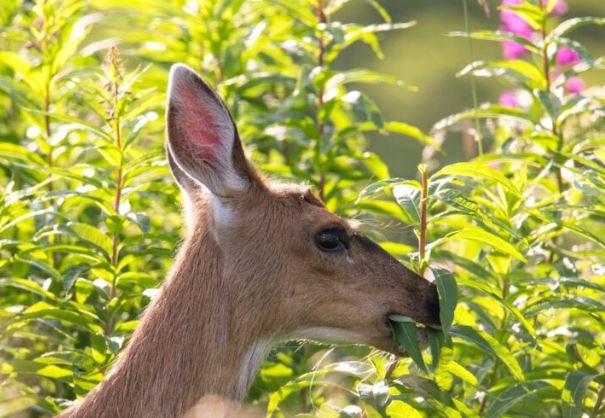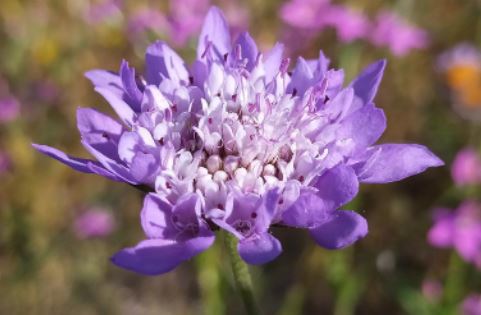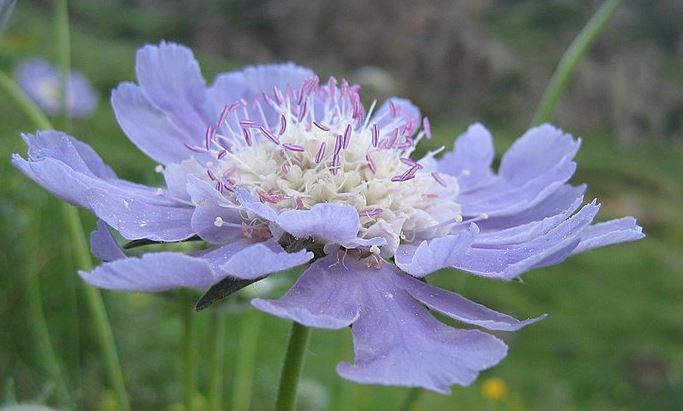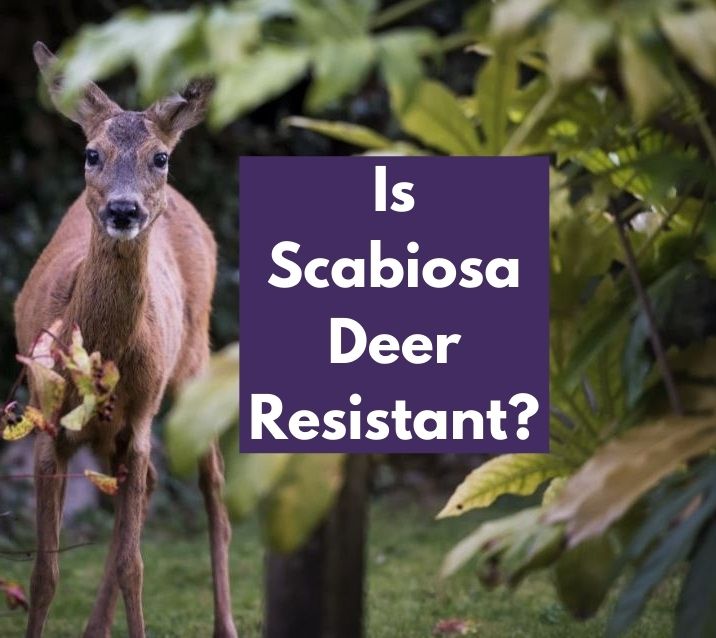If you’re an avid gardener, you may have scabiosa in your outdoor plant collection. Scabiosa (also known as pincushion flowers) are beautiful flowers that add a touch of elegance to any garden. But is scabiosa deer resistant?
Deer do not usually eat scabiosa. Scabiosa are deer-resistant because of their strong scent and hairy buds. But a hungry deer will eat almost anything, which may include scabiosa plants.
Considering that a single deer can eat up to ten pounds of plants each day, you can see how deer eating scabiosa can really do some serious damage to your garden!
In this article, we’ll discuss how to stop deer from eating your scabiosa, and keep them healthy and beautiful all season long.
Why Do Deer Eat Scabiosa?

As we covered, deer usually stay away from scabiosa thanks to their strong scent and the fine-haired buds they produce.
Deer are most likely to eat scabiosa during spring because they’re hungry after a long winter, or if it’s late in fall and other food sources have been depleted.
Your scabiosa are less susceptible to deer damage later in summer when many other food sources they prefer are available.
Deer can do some serious damage to a large amount of scabiosa in a single sitting if they’re hungry enough!
This was confirmed in a 1999 study on deer plant eating habits by Cornell University.
And don’t think that your newer scabiosa are safer either: deer actually prefer new growth because they’re more tender.
Is Scabiosa Deer Resistant?

Scabiosa are regarded as deer resistant thanks to their taste and scent, both of which deer do not like.
Deer also don’t like leaves with textures like hairs on them, and the buds of scabiosa plants are a turn-off for them.
The bitter taste of the flowers and leaves usually keep deer away.
Deer have a keen sense of smell, and the strong scent of scabiosa can also repel them.
As we mentioned earlier, just because scabiosa are deer resistant doesn’t mean they are completely safe from being eaten by deer.
You should always take additional steps to deter deer from your scabiosa and other plants and flowers.
Read on to learn more.
How Do I Keep Deer From Eating My Scabiosa?

There are a few things to keep in mind when you’re protecting scabiosa from hungry deer: their habits, your scent, repellent options, and when you plant them.
Deer will eat nearly anything if they’re hungry enough, so your main goal is making your garden as least inviting to deer as possible.
Check out our guide on how to keep deer from eating plants where we cover 25 quick and easy tips for keeping hungry deer out of your garden.
Will My Scabiosa Grow Back After Deer Eat Them?
Fortunately, scabiosa can bounce back from browsing by deer if given some care, attention, and time.
Pincushions can withstand a good bit of pruning, so if a deer eats them they can usually bounce back after a while.
Scabiosa are considered perennials, meaning they’ll grow back each year.
Do Deer Eat Scabiosa? Wrapping Things Up
So, do deer eat scabiosa?
Not usually, but they will if they’re hungry enough.
Deer will usually stay away from scabiosa, but may eat them during spring when they’re hungry after a long winter or in late fall when other food sources have been depleted.
Have any observations to add to the discussion? Be sure to let us know in the comments below.
Check our our other helpful wildlife guides while you’re here:
- Do deer eat water lilies?
- Do deer eat hydrangeas?
- Do deer eat little gem magnolia?
- Do deer eat azaleas?
- Do deer eat Gerbera daisies?
- Do deer eat honeysuckle?
- Do deer eat geraniums?
- Do deer eat African daisies?
- Do deer eat canna lilies?
- Do deer eat iris?
- Do deer eat four o’clock flowers?
- Do deer eat anemone?
- Do deer eat liatris?
- Do deer eat bougainvillea?

